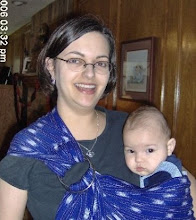Birth and Breastfeeding News reports that efforts are underway in Alabama, North Carolina, Idaho, South Dakota, Illinois, Kentucky, Georgia, Missouri, and Indiana to legalize/regulate the practice of direct-entry midwifery:
Legalization and licensure of CPM practices in all these states would represent a massive legislative victory for advocates of traditional home birth.
It would also be a startling rebuke to the many physicians who have long maintained that such practices are unsafe, despite growing statistical evidence that suggests CPM-supervised home births are as safe – sometimes safer – than hospital births.
Well-organized opposition within medical lobbying groups makes such a one-sided result unlikely within the next two years, Ms. [Ida] Darragh says. But, when asked if the flurry of activity in the nation’s statehouses is indicative of a national trend in support traditional childbirth methods, she adds: "We certainly hope so."
As with many health issues, the debate about CPMs may seem arcane to non-experts. The debate is a minefield of acronyms, and home births account for just 1 to 3 percent of all births in an average year, with similar percentages in each state.
Yet the debate casts in sharp relief a philosophical tug-of-war over the nature of childbirth that powerfully affects how expectant mothers approach the ordeal of birth.
ACOG, a "well-funded proponent of childbirth in the hospital setting, opposed the Wisconsin reform, publishing a position paper stating that CPM-supervised home birth 'cannot be considered safe'", despite numerous studies to the contrary. However,
Asked to provide any statistical evidence contradicting such studies, for the sake of this story, ACOG sent none but e-mailed two policy statements further explaining the organization's position on the certification of midwives.




No comments:
Post a Comment